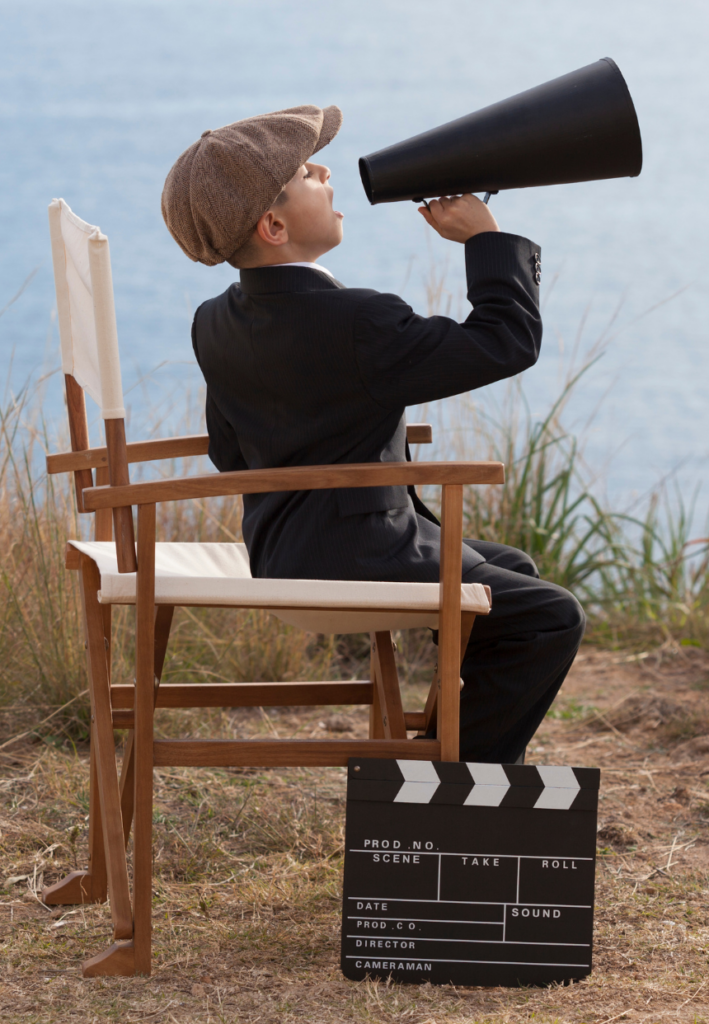A high-quality film trailer is crucial for independent filmmakers to win grants, build an audience, and attract investors, donors, and partners.
by Carole Dean
Creating a film trailer is a very specific skill, a unique art, and science. The trailer not only has to tell a compelling story, but it also has to show that this filmmaker knows how to tell it in two minutes. It needs to have three acts that are energy driven by music.

Michael Torres is a talented filmmaker and editor with whom I had the pleasure of interviewing for The Art of Film Funding Podcast. He shared his wisdom on how to create a stunning film trailer. And we learned best practices for finding a film trailer editor.
I can speak from experience with our own Roy W. Dean Grant that a stellar trailer can be a deciding factor in which films we select as finalists and winners.
Creating your trailer is a discovery process.
“It seems like such a catch 22, right? You have to show the film so that someone gives you permission to make the film,” Michael explained.
“I really do think it’s an opportunity to conduct experiments with your film to find out what the visual language is, to find out what’s working, what’s not working. I think you can get insights into your film in this trailer editing phase because you’ll learn a lot about yourself and your material in this process.”
Trailers are not one size fits all, and there are different kinds of trailers for different purposes. A sizzle reel is very different than a funding trailer.
He described a sizzle reel as “anything from 30 seconds to two minutes. You want it fast paced, you want it to have a three-act structure, and clearly communicate an idea. I think a sizzle should be the vibe of your film, or the spirit of your film. This is really what you’re trying to articulate. What does this film feel like?”
A grant, such as the National Endowment for the Humanities, may ask you for a 15-minute excerpt from your film. For Michael, “that is really an exploration of how you intend tell the story. You need to explain, what is the film, what are the elements of the story, and then taking a complete scene and laying it out from A to Z and stringing together sequences.”
What’s the story?
Michael said that regardless of the format or length of the trailer, “I want that element of a reel right up front. And whether it’s a sizzle reel or it’s a funding trailer, in that first 30 seconds or so, I really want whoever’s watching this to know what this film is about, why we’re making it, who the main characters are, and what it is we’re trying to convey. And then we can get moody with it. But I want to answer those questions right up front.
“So, whether it’s a 30-second sizzle, a two-minute film trailer, or a 15-minute demo, we want to excite the viewer and leave them in a place where they want more. We want to tease them, so to speak.”
While it may not apply to all film genres, Michael believes all trailers should also typically convey what is the central conflict of the story.
Following the A,B,C’s
The progression a successful film trailer must include, what Michael refers to as he “A, B, C of the trailer.”
“It’s the opening, the middle and the end, the act one, act two, act three, there must be movement,” he explains. “If I’m introducing a character, there should be a change in that character. Meaning, by the end they are different from the person I met at the beginning.”
As a grantor, I look for the trailer to catch my attention in the first five to ten seconds. One of the things I don’t like is when the trailer starts with 10 to 20 seconds of titles.
A funding trailer should not have long credits at the beginning. I am here to listen to an engaging story. People must realize that grant judges are watching one trailer after another after another. It’s just how they do it, so to stand out over the rest, engage me with the first frame!
The faster you tell me the story, the more you engage me. We fund stories.
Tell me a “Sticky Story” that I can remember.
Michael agreed that the trailer needs to draw you in immediately. “I want a splash of cold water as soon as I step in. You don’t want to bog down the opening with your five second animated logo and a 20-second moody drone or anything like that.
“Because I don’t know what I’m watching. I want to engage with the viewer as soon as humanly possible. So, I use an inciting line, or an image, or a scene or a moment that drops me into what this film is about, what the essence and the vibe is, that’s what I really lead off with.”
For me, one of the most important parts of a trailer is to convey a “sticky story.” This is a story that the viewer can easily remember and wants to share with others. I teach this in my Intentional Filmmaking Class. I recommend a book called Made to Stick by Dan and Chip Heath, about why some ideas survive, and others disappear.
Something emotional, something credible, something shocking
They found what is most important is something emotional, something concrete, something credible, and something shocking, and tell your story around this. The reason is because almost everyone you’re going to ask for money has a significant other, mother, brother, or someone with whom they will discuss your film.
When that happens, they are now pitching your film. Your job is to make sure they get the essence of the film in your pitch or in your trailer, and something shocking, concrete, credible and emotional create “sticky stories” people can remember.
“That’s about the attention span you’re gonna get from someone too,” Michael concurred. “You may have this brilliant treatment that lays out every beat of the story, but if I can’t kick it to you in an elevator and you understand it, or understand it in two minutes, then I’ve lost you.”
I also recommend, if possible, to make different trailer versions for different purposes. One way to do it is called ‘Cover Your Bases.’ This is to get a 10-minute film trailer, a five-minute trailer, and a two-minute. Those seem to be the ones that are asked for the most if you’re going after grants.
I don’t have a time limit on my trailers, but I like a three-to-five-minute trailer.
How to find the right trailer editor?
I also spoke to Michael about his recommendations for finding the perfect trailer editor. Michael said “word of mouth is probably how I’ve gotten 99% of my work and it’s also how I go about finding editors. I want to work with people that have been recommended.
“You’re getting into a relationship when you’re bringing someone on to work on something that you love. So, I think it’s important that you vibe with the person. Just as important as their work, is how comfortable you are working with them. Giving and getting feedback means you really want to be with someone that you trust and can be vulnerable around.”
Working with an filmmaker
About his process as an editor, Michael wants “to know everything I possibly can about the film, but even more so why they’re interested in making the film.
“I really want to understand why it’s important to them and what the feeling is they’re trying to communicate. How do you want the viewer to feel about your subject after they watch this trailer? My focus is always on the quality, the feeling, the tone that we’re trying to communicate.”
The big question is, with so much content to choose from, how does an editor decide what goes into the trailer? Michael looks for the most interesting things he has.
“So, it’s the scenes that already work, the low hanging fruit, that’s working. What do I know if I match this piece of b-roll with this interview? Sometimes it works and it conveys a message. I’m not working linear necessarily. I’m not starting at the beginning and ending at the end.
“I’m taking everything I have that I know works, building that, and then starting to find ways to connect them.”
You may want to read part 2 where we speak in depth about conducting interviews for documentaries, and how to incorporate these interviews into trailers.
Listen to entire podcast in link below:
Podcast is also available on iTunes, Stitcher, Goodpods, and Blogtalkradio
You can learn more about Michael Torres at www.mtorresproductions.com.
Carole Dean is president and founder of From the Heart Productions; a 501(c)3 non- profit that offers the Roy W. Dean Film Grants and fiscal sponsorship for independent filmmakers.
profit that offers the Roy W. Dean Film Grants and fiscal sponsorship for independent filmmakers.
She is creator and instructor of Learn Producing: The Ultimate Course for Indie Film Production. 26 classes which will teach indie filmmakers how to produce their films.
She hosts the weekly podcast, The Art of Film Funding, interviewing those involved in all aspects of indie film production. She is also the author of The Art of Film Funding, 2nd Edition: Alternative Financing Concepts. See IMDB for producing credits

